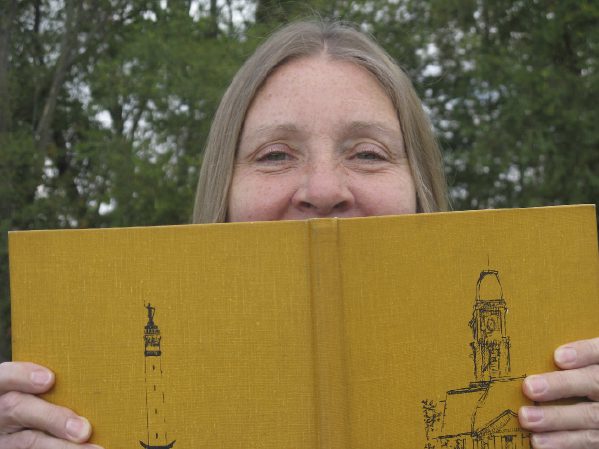Dillinger Hysteria Hits Westfield
From Time to Thyme
By: Paula Dunn

Last week I wrote about my efforts to learn if John Dillinger’s body had really made a stop outside the Westfield Cafeteria on its way to Indianapolis for burial, as Helen (Carey) McColgin had said.
That’s not the only time she believed Dillinger visited the Westfield Cafeteria, though.
When Michael and Nicole Kobrowski interviewed her for the Westfield Washington Historical Society sometime in the early 2000s, she told them a living, breathing Dillinger had eaten at the restaurant.
Although she didn’t provide an exact date, I’m pretty sure she was referring to an incident described in the May 28, 1934 Noblesville Daily Ledger.
The Oct. 25, 1934 Ledger article about Harry Pierpont that I mentioned last week would appear to confirm that. In it, Mrs. McColgin’s father, Lowell Carey, was said to be satisfied that Dillinger had eaten at his cafeteria “last summer.”
I wasn’t so sure about that.
My biggest takeaway from the rather intense Dillinger research I did for a couple of columns years ago was that Dillinger sightings were common all over the country in 1934, especially in the Midwest.
Any time a bank was robbed during the period of the Dillinger heists, chances were good someone would “positively” identify one of the bandits as Dillinger. After Dillinger escaped from the Crown Point, Ind., jail in March 1934, The Associated Press reported that he’d been “seen” 200 times in one day, “sometimes in 10 places at the same time.”
Even the Ledger article that reported the Westfield Cafeteria sighting didn’t claim local residents had actually seen Dillinger. It merely noted that a number of people were “thoroughly convinced” Dillinger, “Baby Face” Nelson, and two women had spent an hour or so in Westfield on May 19.
The “positive proof” witnesses offered for that conclusion: the two couples had arrived in a Ford V8 (said to be the kind of car Dillinger had recently been driving,) the man thought to be Dillinger kept his coat tightly buttoned (as if to hide a bulletproof vest) and the two men resembled photos of Dillinger and Nelson.
In addition, the visitors exhibited a keen interest in the reports of a huge fire at the Chicago stockyard that were being broadcast over the radio of a nearby business. The business wasn’t identified, but I believe it was the local drugstore because it had a soda fountain.
Westfield barber “Doc” Ross happened to be sitting at the counter drinking a Coke when he was told “Dillinger” had entered the building. The news startled him so badly, he accidentally swallowed several big chunks of ice!
Although I’m sure Mrs. McColgin and her father genuinely believed Dillinger ate at their cafeteria, I found no evidence to support that.
On the contrary, what I DID discover appears to disprove it.
Shortly after Dillinger’s death, a man named G. Russell Girardin wrote a series of newspaper articles about him. Girardin obtained most of his information directly from Dillinger’s lawyer, Louis Piquett, so presumably he knew what he was talking about.
According to Girardin, during the first half of May, 1934, Dillinger and gang member Homer Van Meter spent most of their time hiding out in a decrepit old shack near East Chicago, and when they weren’t there, they were roaming Lake County back roads and sleeping in a red panel truck.
On May 19, the day “Dillinger” and his friends supposedly ate at Westfield, the real Dillinger was so sick with a cold — possibly pneumonia — that Piquett’s investigator, Arthur O’Leary, had to take him medicine.
In view of all that, I’m sticking with my previous statement — Dillinger’s only VERIFIED visit to Hamilton County was when he hid in a haystack near Bakers Corner, waiting to be picked up by his half brother following their April, 1934 car wreck.
Paula Dunn’s From Time to Thyme column appears on Wednesdays in The Times. Contact her at [email protected]
